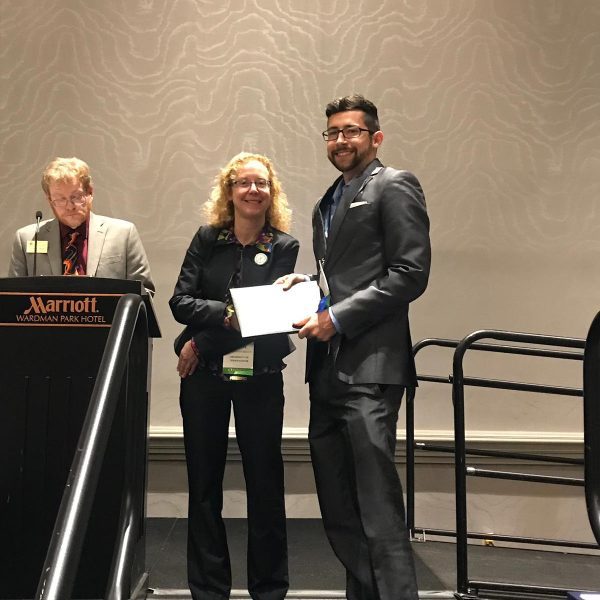CAGIS Researcher Receives 2019 AAG Dissertation Grant

Washington DC, April 2019. CAGIS researcher Michael Desjardins (PhD Student) received a 2019 AAG Dissertation Research Grant to support his dissertation titled “A mixed-methods approach for vector-borne disease surveillance in Colombia”.
From Desjardin’s upcoming dissertation:
Vector-borne diseases (VBDs) affect more than 1 billion people a year worldwide, cause over 1 million deaths, and result in hundreds of billions of dollars in societal costs. Dengue fever (DENF), chikungunya fever (CHIK), and Zika fever (Zika) are three emerging VBDs that are transmitted by the Aedes mosquito. A combination of increased urbanization, globalization, climate change, and decreases in vector control have resulted in global increases in VBD epidemics, especially in previously unaffected regions. In Colombia, the co-circulation of DENF, CHIK, and Zika have resulting in severe epidemics where hundreds of thousands of people have been infected during the past decade. DENF has been endemic in Colombia for decades, while CHIK and Zika first appeared in 2013. It is critical to implement surveillance strategies that can improve the understanding of VBD transmission. Integrating mixed-method approaches in VBD surveillance are important because solely using quantitative approaches will not capture the experiences and behaviors of people who are susceptible to disease. This dissertation will combine spatial and space-time statistical models and surveys to understand the socioeconomic, environmental, and institutional factors that influence the transmission of DENF, CHIK, and Zika in Colombia from 2015-2016. Specifically, I will address the following gaps in the literature: (1) an exploratory study that utilizes space-time statistics to detect multivariate clusters of co-occurring VBDs transmitted by the same vector; (2) visualizing space-time clusters of disease in a 3D environment to improve the understanding of the space-time dynamics of an epidemic; (3) fine-scale (e.g. neighborhood-level) space-time modeling of the place-based determinants of VBDs; and how these risk factors vary by neighborhood, and disease; (4) examine how VBD cases and risk factors in one neighborhood is influenced by cases and risk factors in surrounding neighborhoods; (5) and little is known about how individual knowledge and practices influence VBD risk; and how this varies by disease, across sociodemographic groups at a fine-scale (neighborhood level). Combining exploratory clustering and fine-scale space-time models with surveys can be a comprehensive and holistic approach to improve the understanding of the processes responsible for the spread of VBDs. The results from chapter 1 can identify the regions in Colombia that experienced the greatest burden of DENF and CHIK; while chapters 2 and 3 will examine the local variation in disease risk in Cali, Colombia. The results for chapter 2 will identify the neighborhoods in Cali that have the highest risk of DENF, CHIK, and Zika transmission, while shedding light on statistically significant determinants of the three aforementioned VBDs. Furthermore, chapter 2 will also determine how the characteristics of adjacent neighborhoods may increase or decrease an individual’s risk of contracting a VBD. For example, low-income neighborhoods adjacent to high-income neighborhoods may have a lower risk of VBDs. Chapter 3 will be the first study of its kind that examines how KAP may vary by disease (DENF, CHIK, and Zika) and sociodemographic groups at a fine-scale (low, medium, and high income neighborhoods). The results of the KAP surveys can substantially improve targeted interventions and education programs that meet the specific needs of particular neighborhoods.